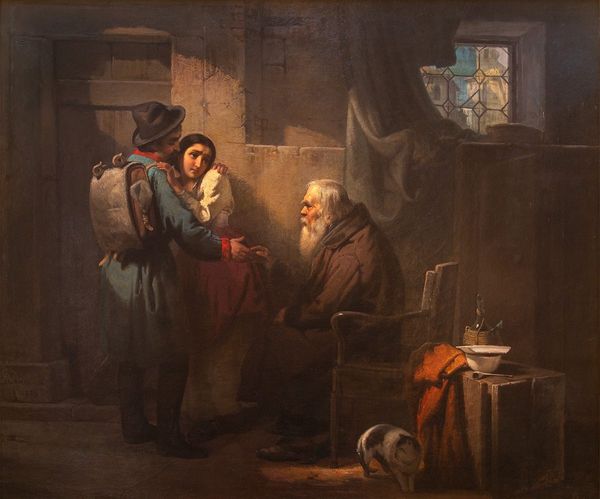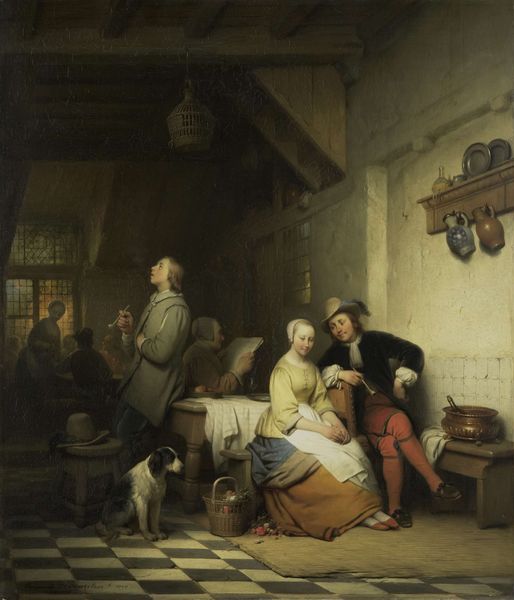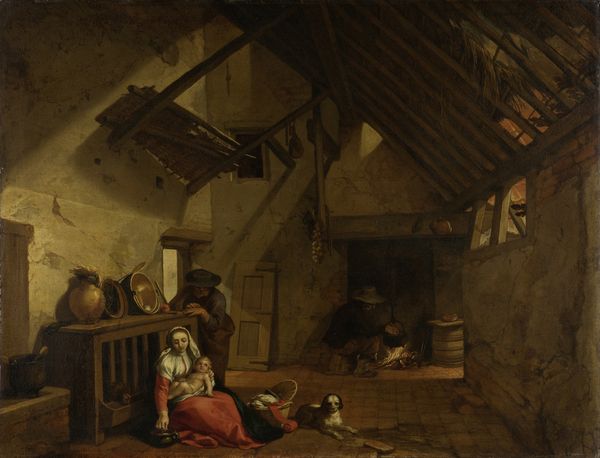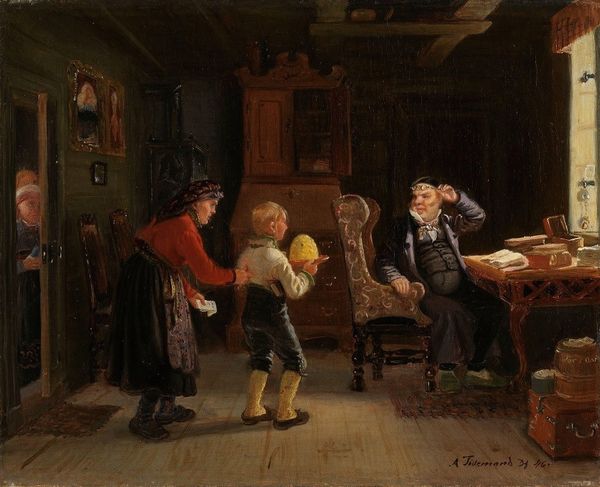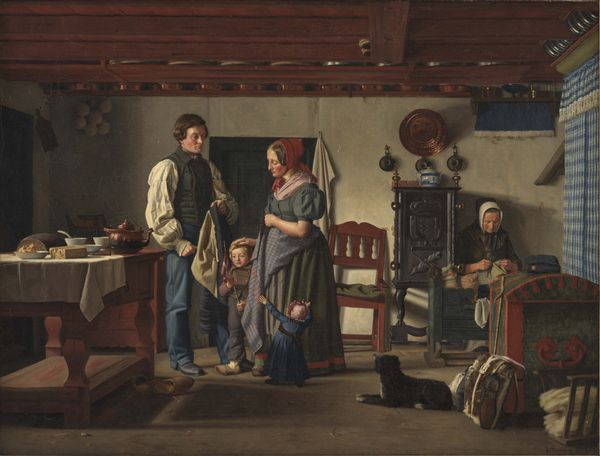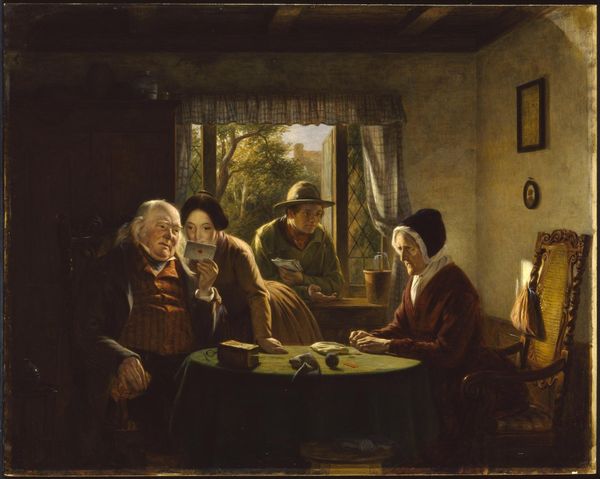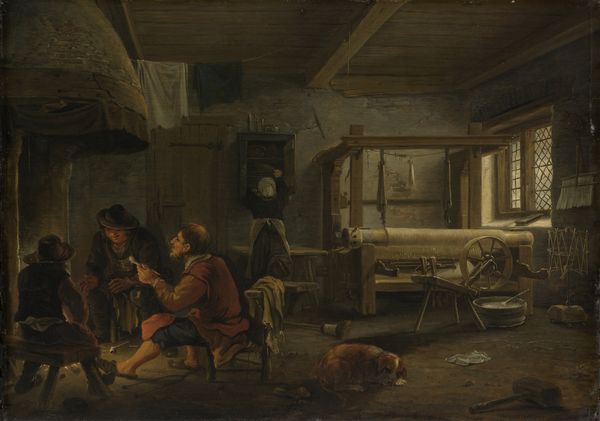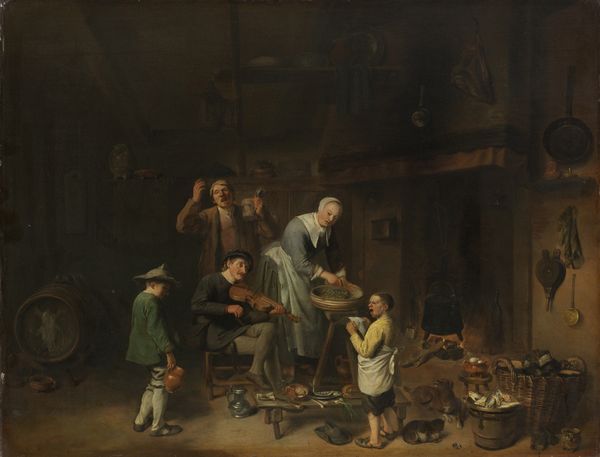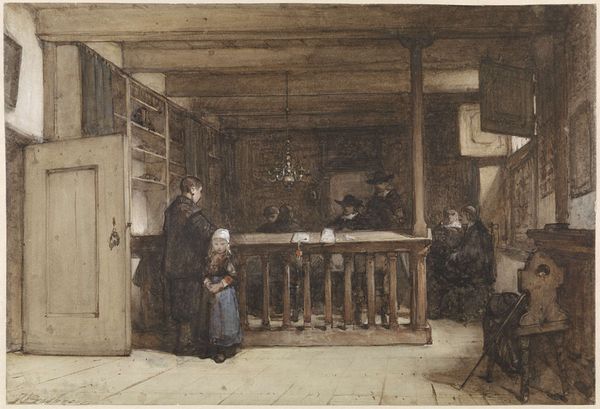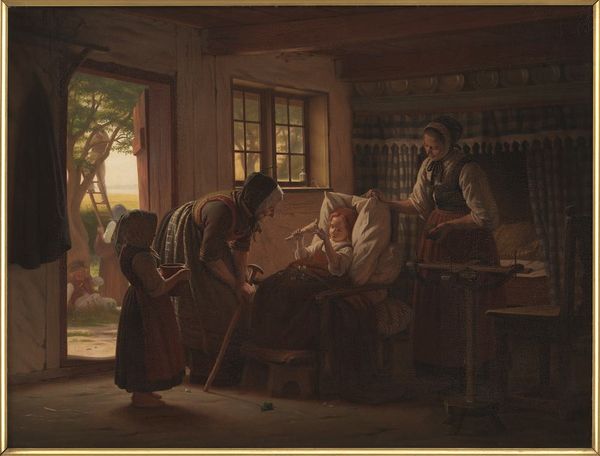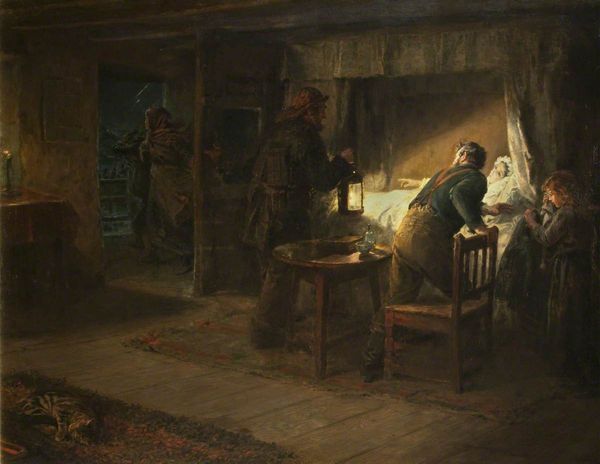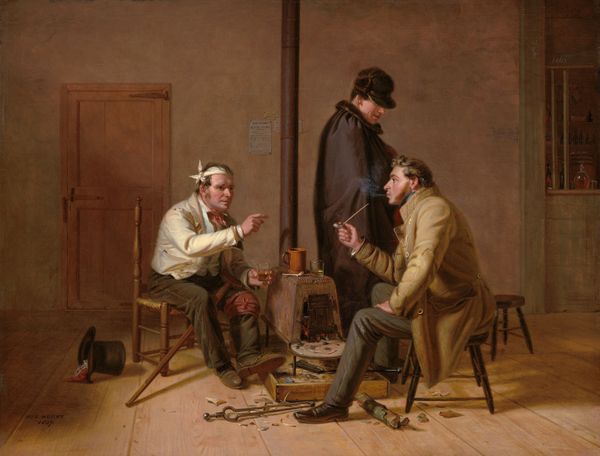
The Village Carpenter Bringing a Coffin for a Dead Child 1857
0:00
0:00
Dimensions: 73.5 cm (height) x 104.5 cm (width) (Netto), 92.5 cm (height) x 123.5 cm (width) x 7.5 cm (depth) (Brutto)
Editor: So, this is Christen Dalsgaard's "The Village Carpenter Bringing a Coffin for a Dead Child," painted in 1857. It’s an oil painting, and the scene is overwhelmingly somber, steeped in grief. What societal norms of the time shaped such a sorrowful depiction? Curator: The painting exemplifies the genre painting tradition, which often sought to portray everyday life and domestic scenes with a certain moral gravity. The rise of Realism coincides with expanding middle-class art audiences interested in seeing themselves and their values represented, albeit through a lens of Romantic melancholy. Do you see how the setting reinforces a sense of profound intimacy and domestic tragedy? Editor: Yes, the close quarters and the figures clustered together really amplify the emotion. It feels very staged. Curator: Precisely! The careful arrangement serves a purpose. By displaying the genuine pain within these societal confines, it prompts discussion about class structure, accessibility of care, and the social role of women, which might have created a unique experience for the average museum patron. Considering the social safety nets in Denmark, is there a subtle call for awareness, in your opinion? Editor: I hadn't thought of it that way. It adds another layer of understanding to this intensely personal scene. Curator: Exactly. The way Dalsgaard depicts this somber event is inseparable from his cultural environment. Editor: I learned something really meaningful today, approaching a piece with cultural understanding.
Comments
No comments
Be the first to comment and join the conversation on the ultimate creative platform.
